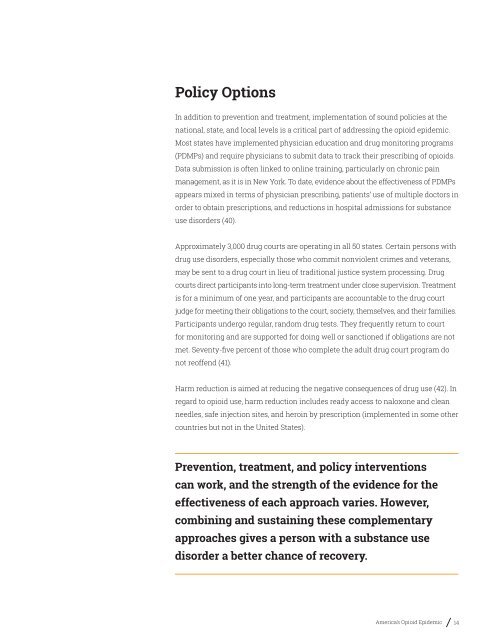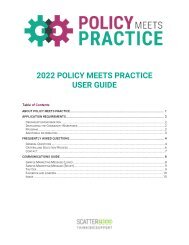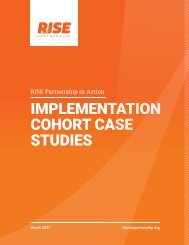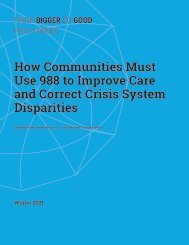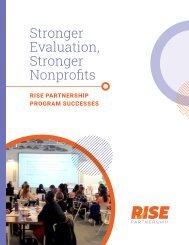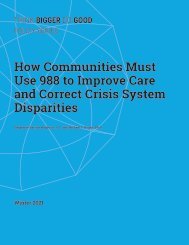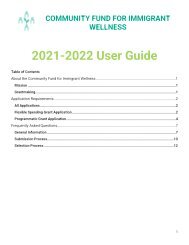Americas Opioid Epidemic
Create successful ePaper yourself
Turn your PDF publications into a flip-book with our unique Google optimized e-Paper software.
Policy Options<br />
In addition to prevention and treatment, implementation of sound policies at the<br />
national, state, and local levels is a critical part of addressing the opioid epidemic.<br />
Most states have implemented physician education and drug monitoring programs<br />
(PDMPs) and require physicians to submit data to track their prescribing of opioids.<br />
Data submission is often linked to online training, particularly on chronic pain<br />
management, as it is in New York. To date, evidence about the effectiveness of PDMPs<br />
appears mixed in terms of physician prescribing, patients’ use of multiple doctors in<br />
order to obtain prescriptions, and reductions in hospital admissions for substance<br />
use disorders (40).<br />
Approximately 3,000 drug courts are operating in all 50 states. Certain persons with<br />
drug use disorders, especially those who commit nonviolent crimes and veterans,<br />
may be sent to a drug court in lieu of traditional justice system processing. Drug<br />
courts direct participants into long-term treatment under close supervision. Treatment<br />
is for a minimum of one year, and participants are accountable to the drug court<br />
judge for meeting their obligations to the court, society, themselves, and their families.<br />
Participants undergo regular, random drug tests. They frequently return to court<br />
for monitoring and are supported for doing well or sanctioned if obligations are not<br />
met. Seventy-five percent of those who complete the adult drug court program do<br />
not reoffend (41).<br />
Harm reduction is aimed at reducing the negative consequences of drug use (42). In<br />
regard to opioid use, harm reduction includes ready access to naloxone and clean<br />
needles, safe injection sites, and heroin by prescription (implemented in some other<br />
countries but not in the United States).<br />
Prevention, treatment, and policy interventions<br />
can work, and the strength of the evidence for the<br />
effectiveness of each approach varies. However,<br />
combining and sustaining these complementary<br />
approaches gives a person with a substance use<br />
disorder a better chance of recovery.<br />
America’s <strong>Opioid</strong> <strong>Epidemic</strong> 14


